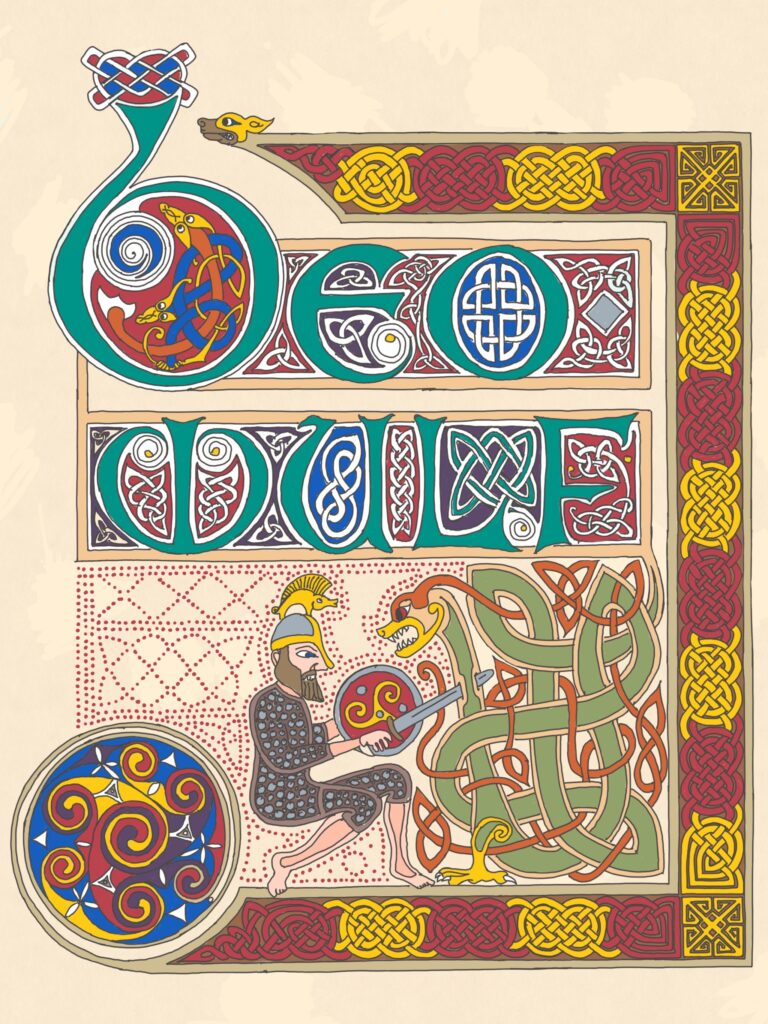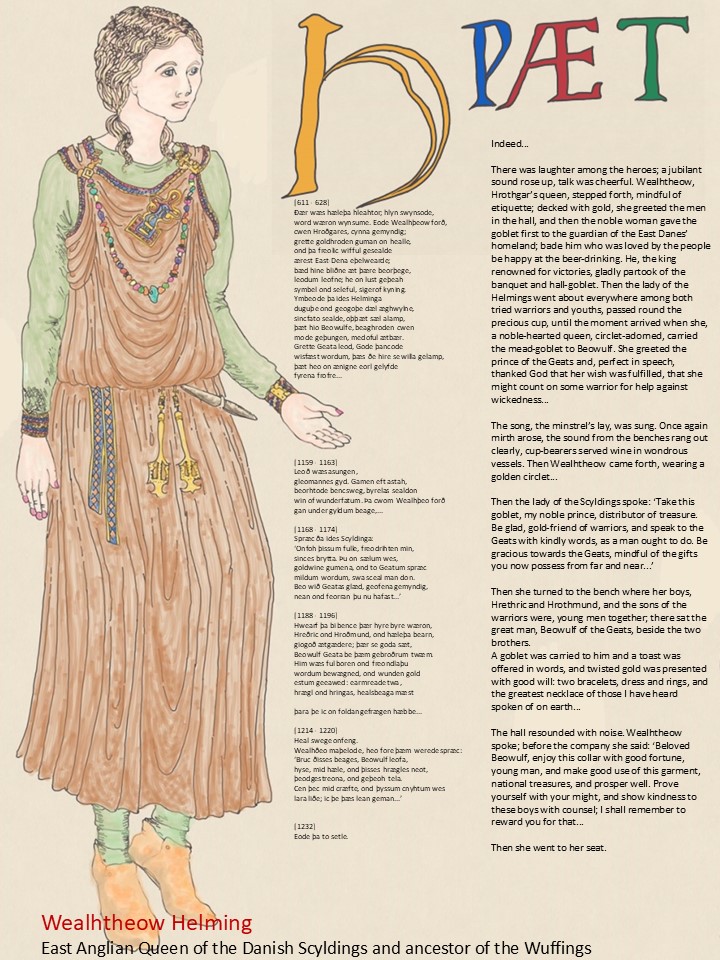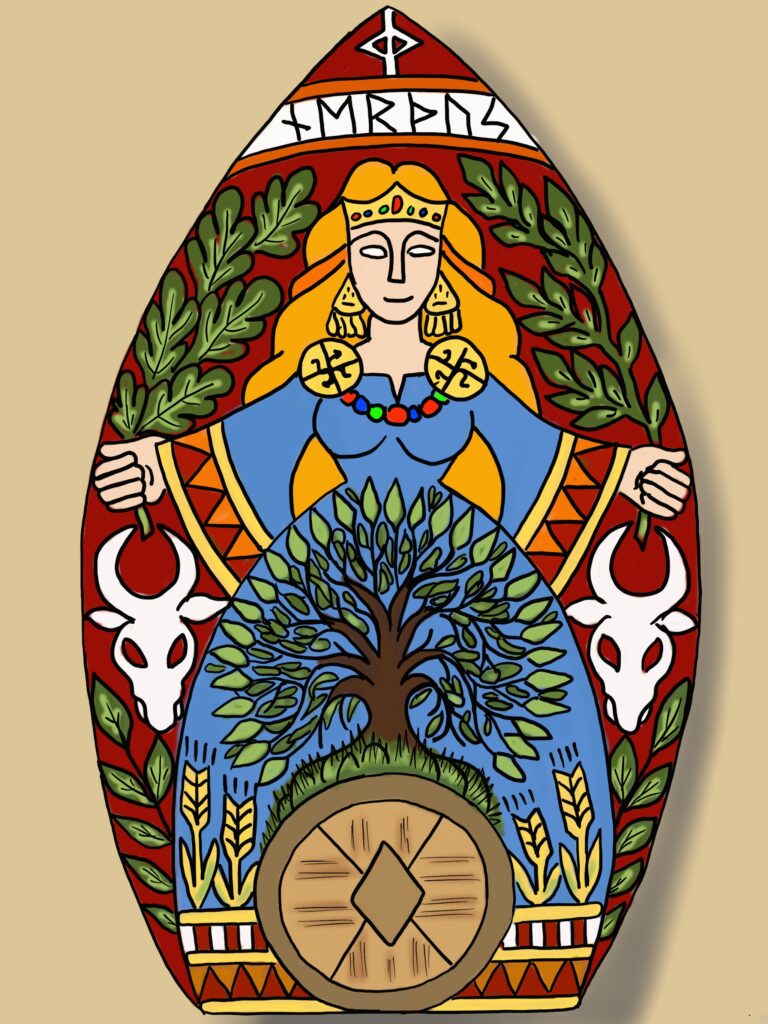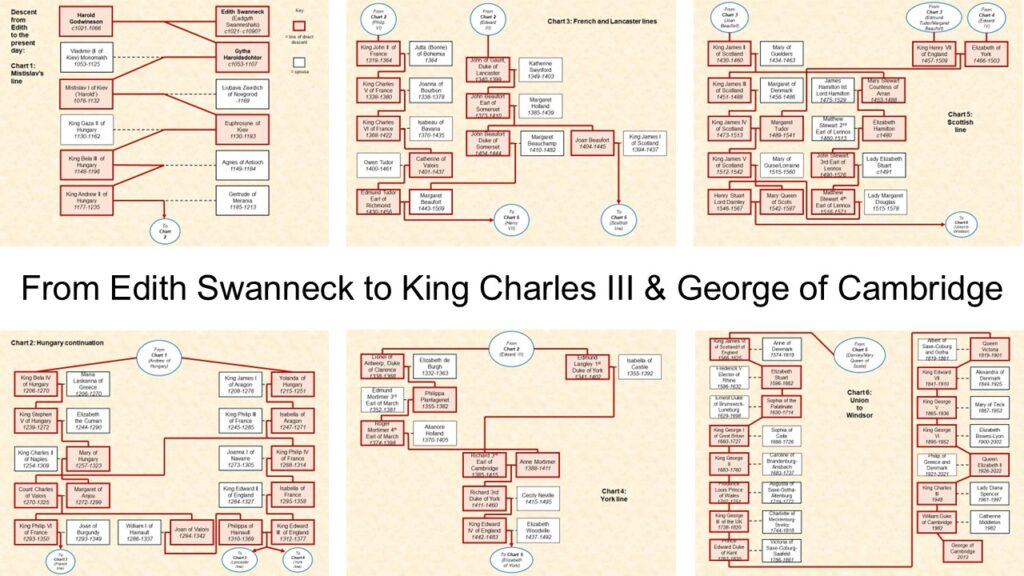We are currently conducting extensive research into Edith’s beliefs – what made her tick and how she viewed life and her conduct within it. These are difficult things to grasp, even for some one alive today, but there are several aspects of her life which we can use to build up an idea of what drove her and conditioned the sort of person she was.
Among these are:
Her Fenland background and the sense of independence and closeness to land and soil that gave her.
Her Scandinavian background and inheritance which may have re-inforced this view, perhaps enacted in reality through her hand-fasting bondship with Harold.
Those same traditions and their intertwining with ‘Old English’ or Anglian settlements during the Migration Age and the development thereafter of the East Anglian Wuffing royal line with which she felt she had a close connection may have led her to become familiar with the early English epic poem Beowulf and in particular to feel a connection with Queen Wealtheow of that story. It is possible Edith saw herself to be a Frithuwebbe, or Peaceweaver, similar to Wealtheow, in her role as fostering harmony and conciliation between family factions, for the good of all.


In turn this brought into her purview the customs, philosophy and traditions behind the ancient pantheon of Iron Age/pre-Viking/Proto-European Vanir goddesses who sought peace and harmony as well as fertility, fecundity and prosperity arising from the beneficial products and largesse of Mother Earth. Chief among these may have been Nerthus, the Earth Mother herself.

But this should be set alongside her evident pragmatic and level-headedness in the affairs of real life on the ground, through acts and works in her lifetime, such as:
The harnessing of a strong belief in the rights of women, through intervening in domestic disputes where appropriate to protect their rights, such as in the case involving the manor of Watton-at-Stone in Hertfordshire, as recorded in Domesday Book.
Her undoubted acts of Christian faith, through benefactions such as to the shrine of Saint Edmund at Bury St Edmunds, the church of St Benets at Holme in Norfolk and the shrine of Our Lady of Walsingham in the same county.
And there is the lasting legacy of her children and their descendants whose life and beliefs come down to us today in some measure (see one line of descent below).
We hope to detail the results of our analysis in a forthcoming publication entitled ‘The Wyrtruman of Eadgifu – Book Two: Beliefs & Works’.

